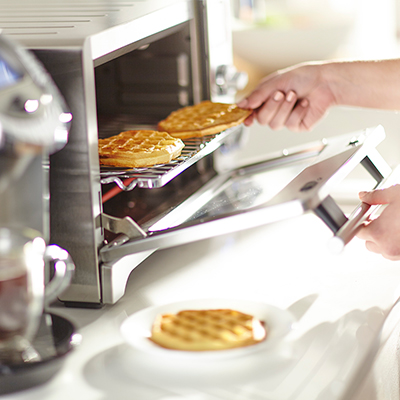Best Pizza Stones for Pizzeria-Style Pies
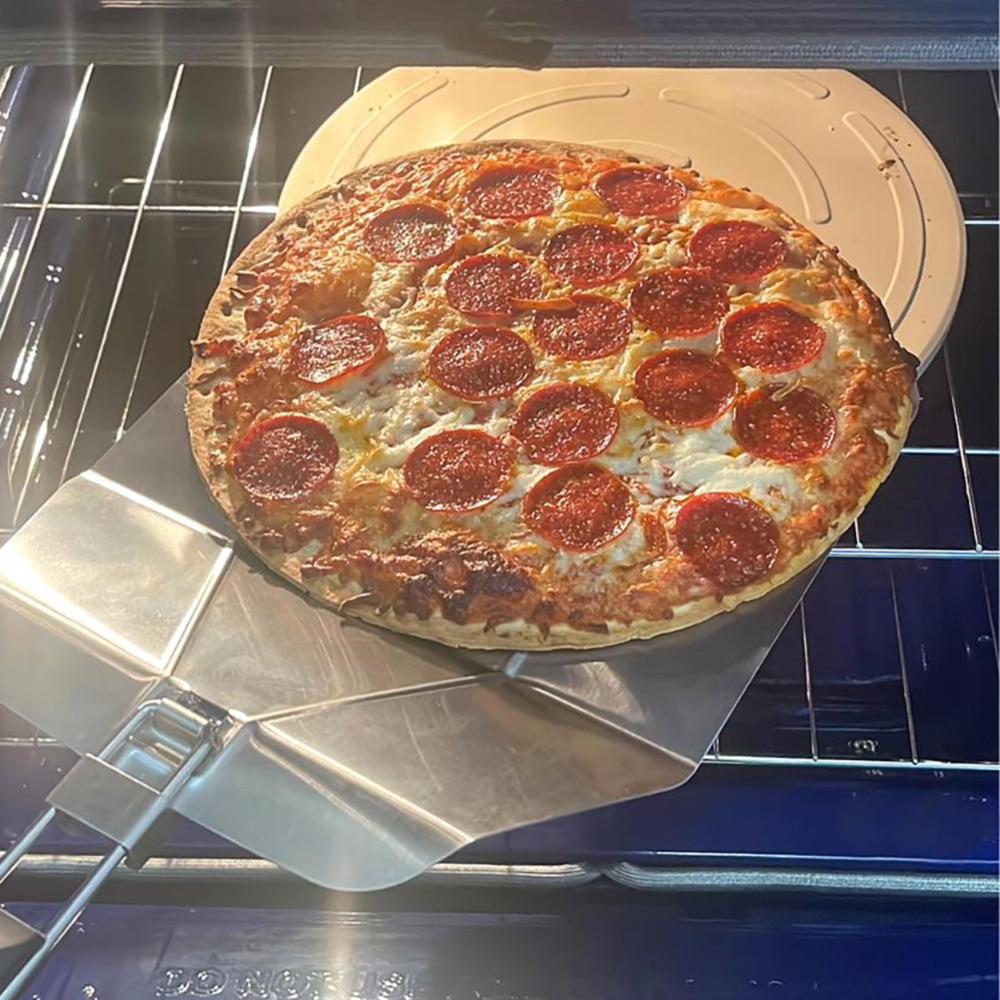
Last updated September 7, 2023
There may be no substitute for a pizzeria oven, but pizza stonesare designed to replicate some of those conditions so you can bake delicious pies without leaving the house or ordering for delivery. They’re also a good accessory for preparing other baked goods. This guide to the best pizza stone for your home reviews how they work and the differences in materials, shapes and sizes, as well as the demands of grills vs. ovens.
Table of Contents
Cooking With a Pizza Stone
Pizza Stone for Oven Materials
Pizza Steels
Pizza Stone Shapes and Sizes
Pizza Stone for Grill
Pizza Peels
Cooking With a Pizza Stone
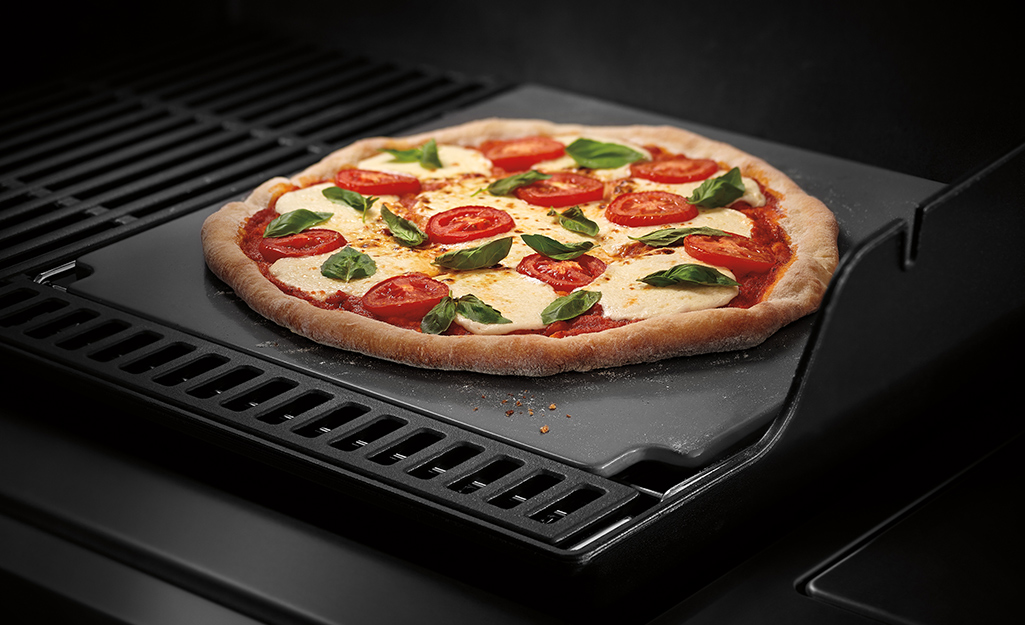
Pizza stones are designed to achieve high temperatures and have a baking surface that helps the dough evenly cook into a dry, crispy crust. At home, conventional ovens seldom reach those temperatures, while cookie sheets make less effective surfaces.
The best pizza or baking stone for your oven is designed for efficient heat distribution to minimize hot spots and bake your pie evenly at high temperatures.
- Many pizza stones have a slightly porous surface that can absorb moisture, pulling excess liquid away from the dough to create a crispy crust.
- Most pizza stones should be preheated for at least 30 minutes to at least 400 degrees Fahrenheit on your oven’s top center rack. Dough placed on a preheated stone will be more likely to puff up and create a thicker, more airy crust with a crispy exterior.
- Many pizza stones run the risk of thermal shock and may crack under drastic fluctuations of temperature. Rather than place a cold stone into a hot oven, preheat it. Let the stone cool down in the oven as well. (Do not place a frozen pizza on a heated stone.) Pizza stones are designed to remain inside the oven without interfering with other kinds of cooking.
Pizza Stone for Oven Materials
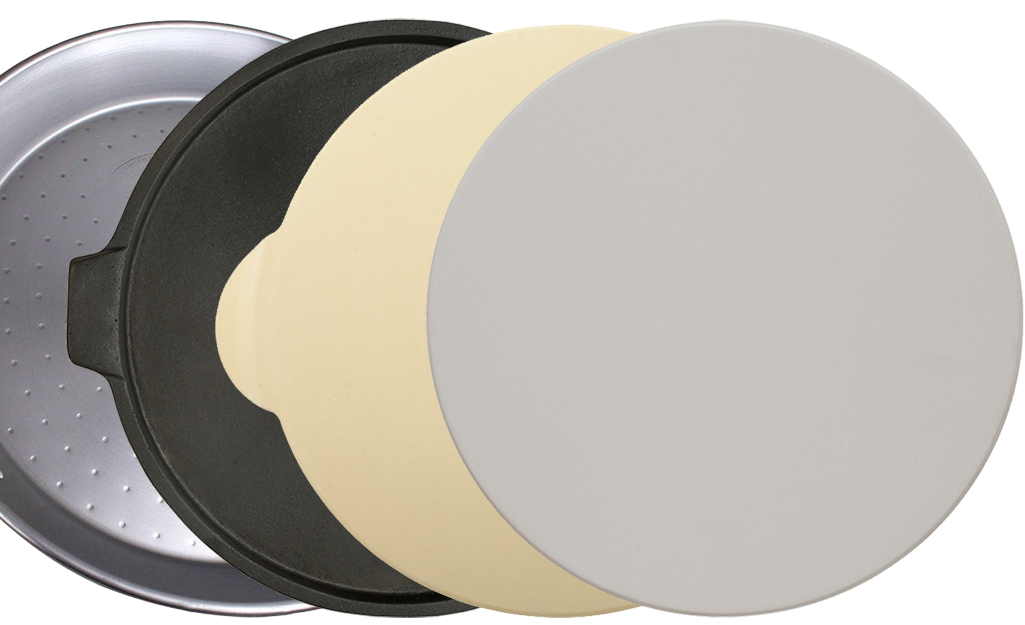
- Pizzas can be baked atop such materials as unglazed tile, marble, firebrick and even blocks of salt, but the most common materials for pizza stones are ceramic and cordierite.
- Ceramic pizza stones are made of clay and fired in kilns. They tend to be effective at absorbing moisture and less expensive, but are more likely to crack under high heat.
- Cordierite, one of the most common pizza stone materials, is a mineral used in kiln shelving designed to withstand high heat and be more durable than a ceramic stone.
- Thermarite is a high-density form of cordierite built to be particularly strong and thermal shock resistant, making it suitable for higher-temperature grills and ovens.
- Pizza stones generally do not require pre-seasoning.
Tip: Some pizza stone enthusiasts are known to bake pies atop inexpensive, unglazed quarry tiles from The Home Depot, but you should be experienced in baking with pizza stones before attempting it.
Pizza Steels
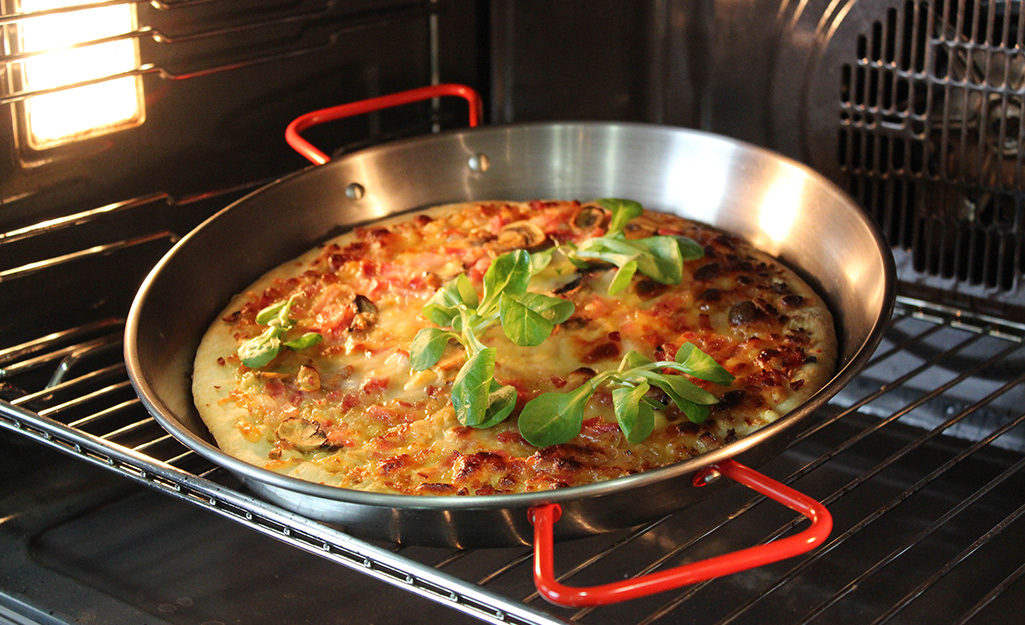
- A pizza steel or baking steel, as the name suggests, is made of metal but operates under the same basic rules of heat retention as a pizza stone by providing a hot, dense surface.
- Metal conducts heat more efficiently than other materials, so it can bake pizza more quickly, although the heat may not radiate as evenly.
- Like a cast-iron skillet, a pizza steel needs to be seasoned before baking to create a non-stick surface. Apply a thin layer of flax seed oil, olive oil or other cooking oil, place the steel in an oven and let it sit for an hour at 375 to 400 degrees Fahrenheit.
- Pizza steels have far less propensity to crack or vulnerability to thermal shock compared to pizza stones. They tend to be heavier and more expensive.
Pizza Stone Shapes and Sizes

- Pizza stones come in round, square and rectangular shapes. If you know you’ll only use it for occasionally baking pizza, a round one should be fine for your needs.
- If you’re a more versatile or ambitious baker, a square or rectangular shape makes a more efficient surface for cooking bread, pastries and other baked goods.
- Unless you’ll be baking small pies for one or two people at a time, you should choose the biggest possible stone that fits in your oven to handle a large pizza. But not too big: the pizza stone should leave an inch of airflow around the sides, so measure the inside of your oven before you buy.
Pizza Stone for Grill
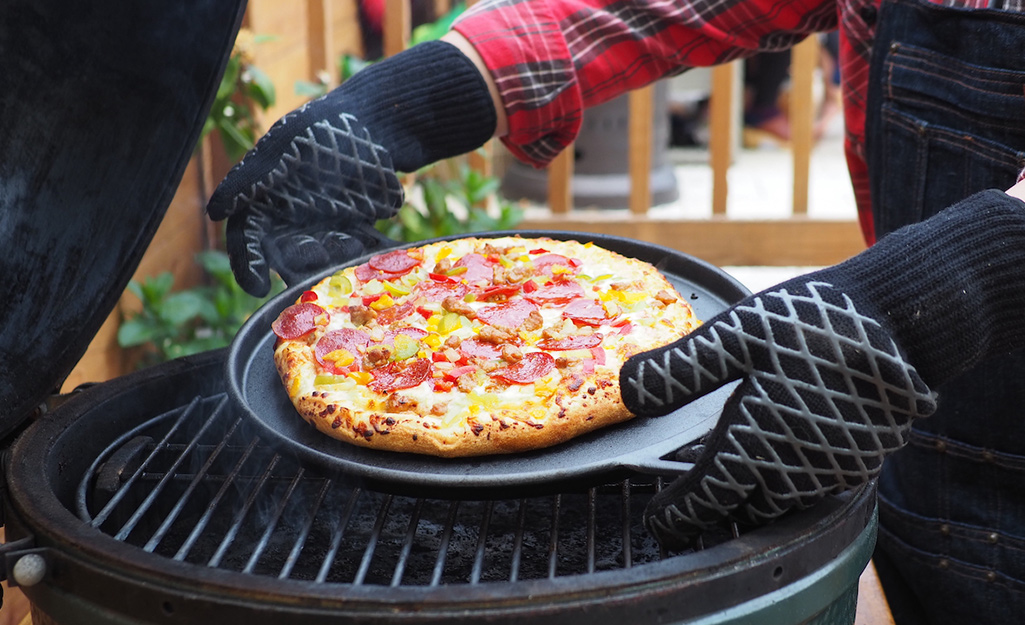
- Grills and smokers are capable of reaching higher temperatures than indoor ovens, so choose a pizza stone accordingly: it should be able to withstand high heat without cracking and retain heat well if grilling temperatures fluctuate.
- A pizza stone for the grill should be durable, but not too big or heavy to easily handle.
- Pizza steels can be effective on the grill, as they need less time to preheat, can cook more quickly at lower temperatures and will not break if dropped. They are heavier and more expensive than pizza stones, however.
- Some products are designed with a box shape to replicate the lower ceiling of a pizza oven while it sits inside a grill.
Pizza Peels

- Pizza stone manufacturers do not recommend placing cold stones in the oven with the uncooked pizza on top. It can be awkward to reach into a preheated oven and place a whole pie on a hot stone, so pizza peels can come in handy. Shaped like a broad, flat paddle, a pizza peel can easily slide the uncooked pie onto the stone and lift it off when done.
- Place some flour or cornmeal on the peel so the pie will slide more easily. You can also cook on parchment paper for an easier transfer.
- Pizza peels come in short-handled, long-handled and metal varieties, and can be fun to use with just a little practice.
Special Features
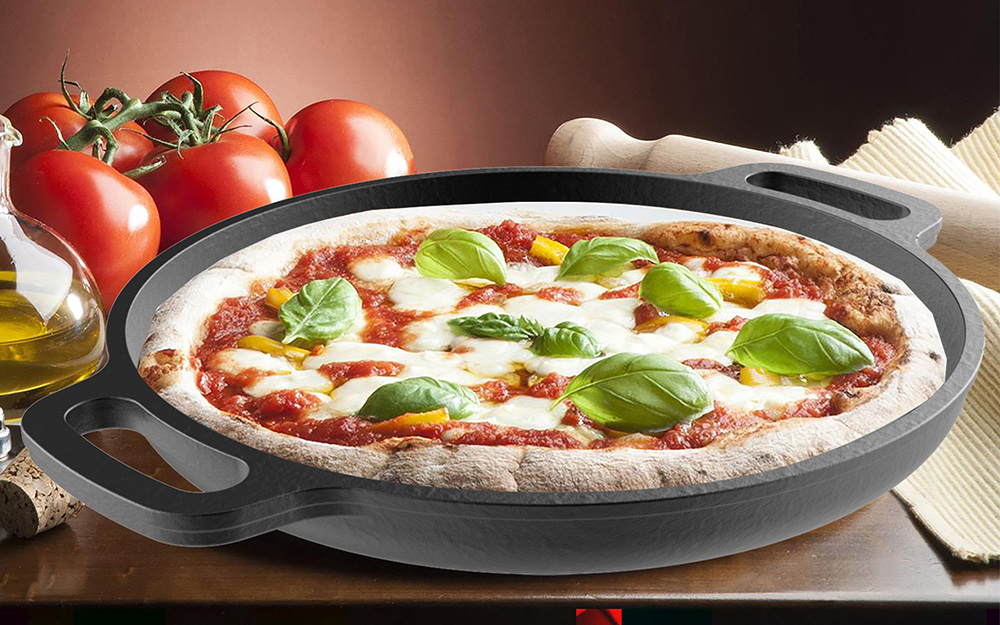
The simplicity of the pizza stone design doesn’t lend itself to many frills, but some have special features.
- Built-in handles or supplemental carry racks make it easier to lift a hot, heavy pizza stone out of the oven.
- A raised lip or “stopper” at the back of the stone help prevent the pie from sliding off the back when using a pizza peel.
- A grooved underside can distribute heat more efficiently.
Washing a Pizza Stone
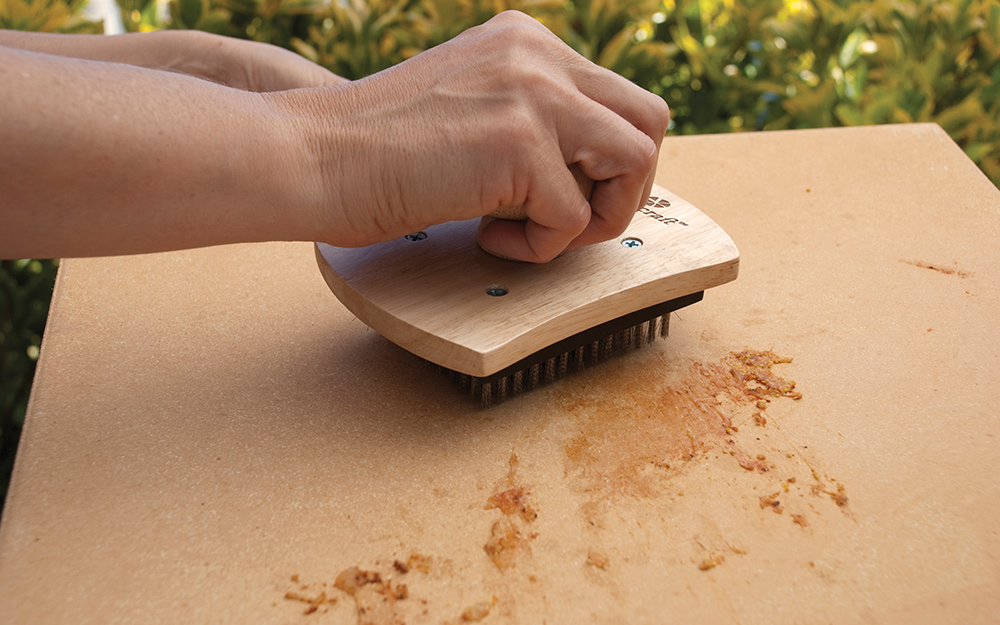
Most pizza stones are not dishwasher safe and should not be washed with soap. To clean a pizza stone, scrub with a brush and warm water, then wipe with a damp cloth.
Whether you want to bake bread or a crispy pie, the best pizza stones for your home, whether ceramic, cordierite or steel, will absorb moisture and cook more quickly than a conventional oven.
Determining the best pizza stone vs. steel requires comparing durability against price. With the right pizza tools, making pizza can be mastered in your kitchen, without relying on the corner pizzeria.
The Home Depot delivers online orders when and where you need them.




